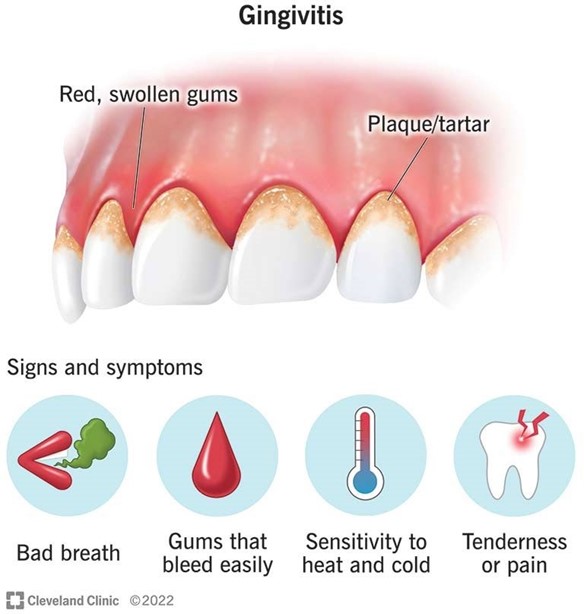A dentist informs the practical nurse (PN) that she has a family history of cancer and has increased the amount of dairy products in her diet to reduce the risk of gingivitis. How should the PN respond?
Suggest an increase in fruits and vegetables is more beneficial.
Encourage the client to get plenty of exercise as well as the dietary change.
Remind the client to make sure the dairy products are fortified with Vitamin D.
Provide written information about the warning signs of cancer.
Provide written information about the warning signs of cancer.
The Correct Answer is A
In this scenario, the dentist is increasing the amount of dairy products in her diet with the aim of reducing the risk of gingivitis due to her family history of cancer. However, the practical nurse (PN) should respond by suggesting that an increase in fruits and vegetables would be more beneficial.
Fruits and vegetables are rich in essential vitamins, minerals, and antioxidants, which can help support overall oral health and reduce the risk of gingivitis. They provide a wide range of nutrients that are important for maintaining healthy gums and teeth.
While dairy products can contribute to overall dental health due to their calcium content, they should not be solely relied upon as the primary means of preventing gingivitis or reducing the risk of cancer. A well- rounded and balanced diet, including plenty of fruits and vegetables, is essential for optimal oral health.
Options b, c, and d are not directly related to the dentist's concern about gingivitis and the increased consumption of dairy products. Encouraging exercise (option b) is generally beneficial for overall health, but it does not specifically address gingivitis. Reminding the client to ensure dairy products are fortified with vitamin D (option c) is not necessary in this context, as the focus is on preventing gingivitis rather than addressing vitamin D deficiency. Providing written information about the warning signs of cancer (option d) is not directly relevant to the dentist's current situation and concern about gingivitis.

Nursing Test Bank
Naxlex Comprehensive Predictor Exams
Related Questions
Correct Answer is B
Explanation
While all of the options address the issue of impaired mobility related to fear of falling, the desired outcome of ambulating with assistance q4 hours is the most specific and measurable goal. This outcome focuses on promoting mobility and addressing the client's fear of falling by providing the necessary assistance during ambulation. It ensures that the client is engaging in regular activity and working towards regaining mobility.
The other options address different aspects of the nursing problem:
A. "The client will use self-affirmation statements to decrease fear" is a potential intervention that can be used to address the client's fear of falling, but it does not directly address the issue of impaired mobility.
C. "The physical therapist will instruct the client in the use of a walker" is an intervention that can be helpful in improving mobility, but it does not specify the frequency or timing of ambulation.
D. "The PN will place a gait belt on the client prior to ambulation" is a specific intervention that ensures the safety of the client during ambulation, but it does not address the frequency or timing of ambulation.
Correct Answer is D
Explanation
Taking oral prednisone with food helps to minimize gastrointestinal side effects such as stomach irritation and upset. Food acts as a protective barrier for the stomach lining, reducing the risk of irritation caused by the medication. Additionally, taking prednisone with food can help improve its absorption and distribution in the body.
The other options mentioned are incorrect:
A- "Take on an empty stomach": This is incorrect because taking prednisone on an empty stomach can increase the risk of gastrointestinal side effects. It is generally recommended to take prednisone with food to minimize these side effects.
B- "Take before bedtime": This is incorrect as there is no specific timing requirement for taking prednisone before bedtime. The timing of prednisone administration should be based on the individual's needs and the instructions provided by the healthcare provider.
C- "Take only as needed": This is incorrect because prednisone is typically prescribed with specific dosing instructions. It is important for the client to follow the prescribed dosing schedule and not take it "as needed" unless instructed otherwise by the healthcare provider.
Whether you are a student looking to ace your exams or a practicing nurse seeking to enhance your expertise , our nursing education contents will empower you with the confidence and competence to make a difference in the lives of patients and become a respected leader in the healthcare field.
Visit Naxlex, invest in your future and unlock endless possibilities with our unparalleled nursing education contents today
Report Wrong Answer on the Current Question
Do you disagree with the answer? If yes, what is your expected answer? Explain.
Kindly be descriptive with the issue you are facing.
